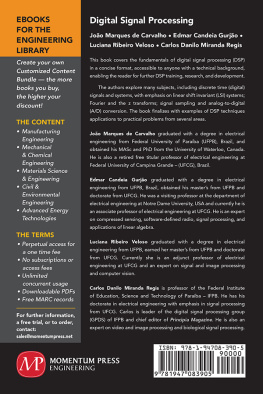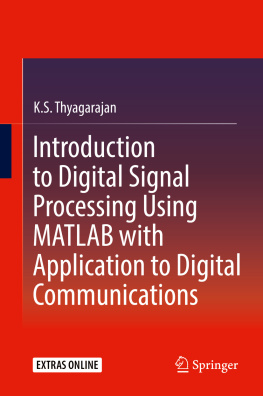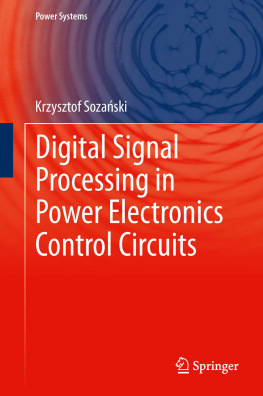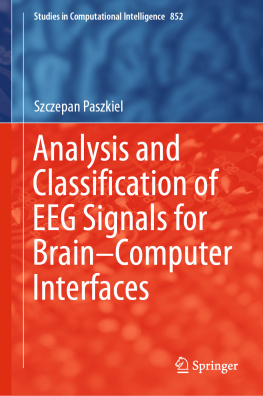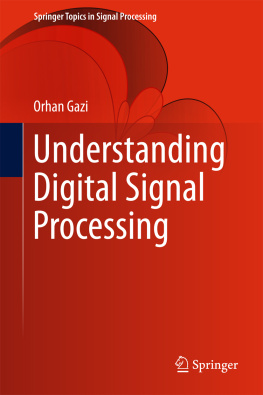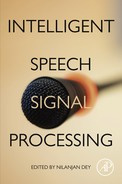Navigation

Brain computer interface
BRAIN COMPUTER INTERFACE EEG Signal Processing
Narayan Panigrahi and Saraju P. Mohanty

MATLAB is a trademark of The MathWorks, Inc. and is used with permission. The MathWorks does not warrant the accuracy of the text or exercises in this book. This book's use or discussion of MATLAB software or related products does not constitute endorsement or sponsorship by The MathWorks of a particular pedagogical approach or particular use of the MATLAB software
First edition published 2023
by CRC Press
6000 Broken Sound Parkway NW, Suite 300, Boca Raton, FL 33487-2742
and by CRC Press
2 Park Square, Milton Park, Abingdon, Oxon, OX14 4RN
2023 Narayan Panigrahi and Saraju P. Mohanty
CRC Press is an imprint of Taylor & Francis Group, LLC
Reasonable efforts have been made to publish reliable data and information, but the author and publisher cannot assume responsibility for the validity of all materials or the consequences of their use. The authors and publishers have attempted to trace the copyright holders of all material reproduced in this publication and apologize to copyright holders if permission to publish in this form has not been obtained. If any copyright material has not been acknowledged please write and let us know so we may rectify in any future reprint.
Except as permitted under U.S. Copyright Law, no part of this book may be reprinted, reproduced, transmitted, or utilized in any form by any electronic, mechanical, or other means, now known or hereafter invented, including photocopying, microfilming, and recording, or in any information storage or retrieval system, without written permission from the publishers.
For permission to photocopy or use material electronically from this work, access
Trademark notice: Product or corporate names may be trademarks or registered trademarks and are used only for identification and explanation without intent to infringe.
Library of Congress Cataloging-in-Publication Data
A catalog record has been requested for this book
ISBN: 978-1-032-14841-0 (hbk)
ISBN: 978-1-032-14842-7 (pbk)
ISBN: 978-1-003-24138-6 (ebk)
DOI: 10.1201/9781003241386
Typeset in Times
by MPS Limited, Dehradun
Contents
Preface
Brain computer interface, popularly known as BCI, is an emerging field of research, finding its use in many societal and medical applications. BCI comprises of four distinct steps: (1) neuro-imaging for acquisition of the digital data from the brain, (2) processing of the neuro-image data for isolating various characteristic features of the brain, (3) classification and mapping of the features to understand the intended motif and actions, and (4) interfacing the action to the device or computer to perform the intended actions. There is more than one method to perform each of these steps. Also, there is directed research to innovate and optimize these methods to make these steps efficient and autonomous in achieving BCI.
In this book, we choose electroencephalography (EEG) as the neuro-imaging technique for performing the data acquisition for BCI. In the rest of the steps the algorithms, computing techniques, visualization, and interpretation of features extracted from EEG were discussed. Therefore, this is the name of the book Brain Computer Interface: EEG Signal Processing. EEG has many spatio-temporal variations and has different ways to acquire an EEG signal. Matching computing techniques and interpretation methods are being researched upon so as to make use of these spatio-temporal variations. The features extracted from EEG are exploited in actuation of devices and computers so as to realize the BCI. Another aspect of neuro-imaging signature of the brain is observed to be fairly similar when a subject performs a similar task but differs in the level for different activities.
We believe that EEG signals, if processed using the right methodology, will help in determining the cognitive behavior of a subject. One aspect of the cognitive behavior is intelligence. As mentioned earlier, the EEG signals are the signature of the brain activity of different regions of the subject.
This book gives a basic introduction to various neuro-imaging techniques, with a special emphasis to EEG and its advantages. Further, the basic classification criteria for different components present in EEG are discussed. It gives varying perspectives as how to understand the scope of processing the EEG signal and its association with popular applications.


